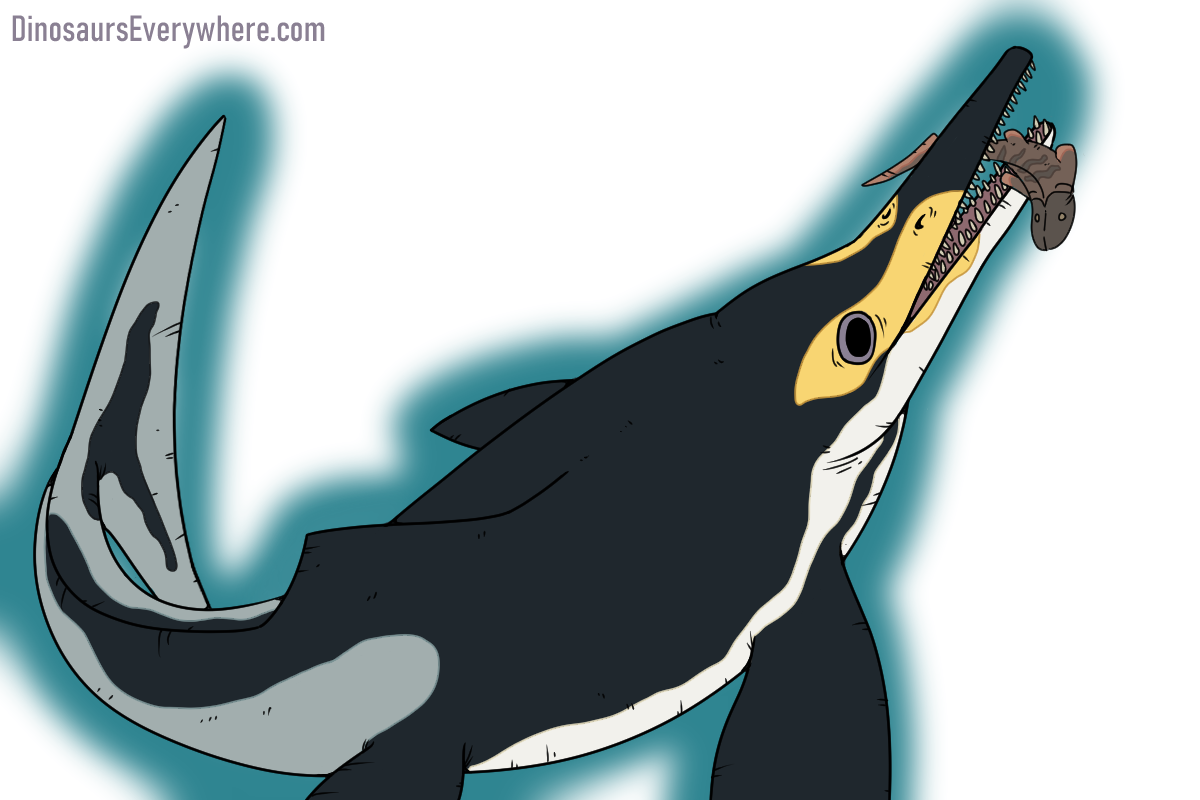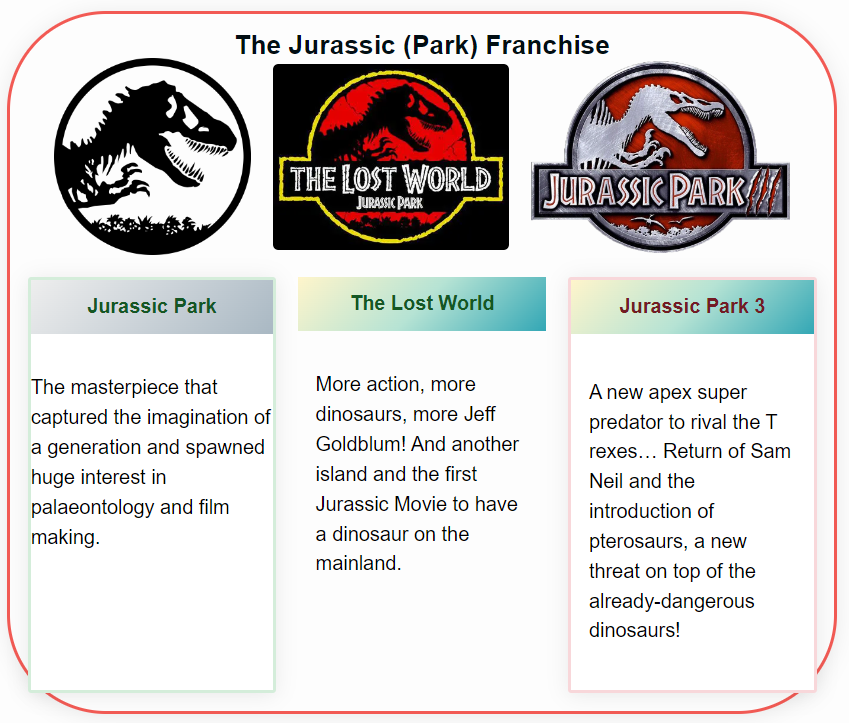What are Ichthyosaurs?
Ichthyosaurs were marine reptiles that flourished in the Mesozoic Era.
These creatures showcased a remarkable resemblance to modern dolphins due to convergent evolution. Originating around 250 million years ago, they evolved streamlined bodies and fin-like limbs, adapting exquisitely to aquatic life.
Unlike their reptilian relatives, Ichthyosaurs were viviparous, giving birth to live young—a rare trait that set them apart.
One thing about these ancient marine reptiles that always catches my eye in the drawings and paintings are the huge eyes in relation to the rest of its head.
Ichthyosaurs had large eyes to adapt to their marine environment, enhancing their ability to see in deep or dimly lit waters, crucial for hunting prey.
The size of an Ichthyosaurus eye could be huge (when compared to the rest of its feautres), with some species having among the largest eyes in the animal kingdom.
Other unusual features of ichthyosaurs include their streamlined, dolphin-like bodies, fin-like limbs, and vertical tail fins. The ichthyosaur species known for having the largest eyeball is likely the Ophthalmosaurus, which is characterised by its notably large eyes, reflecting its name meaning “eye lizard.”
Unique Features and Adaptations
Their most striking adaptation was the development of large eyes, suited for enhanced vision in deep or dimly lit waters, crucial for hunting. The Ophthalmosaurus, known for its exceptionally large eyes, epitomizes this adaptation. These reptiles’ diverse sizes and shapes allowed them to occupy various ecological niches, with diets primarily consisting of fish and cephalopods.
Mary Anning and the First Ichthyosaur Discovery
The first complete Ichthyosaur skeleton was discovered by Mary Anning in 1811, marking a pivotal moment in paleontological history. Recent discoveries, including a well-preserved skeleton in India, continue to enrich our understanding of these ancient mariners.
For more on Mary Anning and other famous female paleontologists, click below:
Famous Female PaleontologistsAnatomy and Evolution
Ichthyosaurs exhibited a range of physical features, from their dolphin-like bodies to variations in skull and flipper shapes. Their evolutionary journey began in the early Triassic, diversifying significantly through the Triassic and Jurassic periods. However, by the late Cretaceous period, approximately 90 million years ago, they vanished from the fossil record.
| Ichthyosaur | Plesiosaur |
|---|---|
| Streamlined, dolphin-like body | Long neck, small head |
| Fish and cephalopod diet | Varied diet, including fish |
| Viviparous (live birth) | Laid eggs |
Taxonomy and Classification
Classified under the order Ichthyosauria, this group encompasses several families and genera, reflecting their diverse evolutionary lineage. They were distinct from other marine reptiles like Plesiosaurs and Mosasaurs, each group adapting differently to aquatic life.
Habitats and Ecology
Ichthyosaurs thrived in a variety of marine environments, from near-shore shallow waters to the open ocean, indicating their adaptability to different marine conditions.
As marine predators, Ichthyosaurs would have played a huge role in the Mesozoic marine ecosystems.
Diet and Hunting
Analysis of Dental Structures and Dietary Habits
Ichthyosaurs were apex predators in their marine ecosystems. Their dental structures varied across species, indicating a range of dietary habits. Most species had conical, sharp teeth suited for grasping slippery prey like fish and cephalopods. Some larger species might have preyed on smaller marine reptiles. Fossil evidence, including stomach contents and coprolites (fossilized feces), provides direct insights into their diets.
Predatory Behavior and Ecological Role
Their streamlined bodies suggest that Ichthyosaurs were fast swimmers, capable of agile maneuvers in pursuit of prey. This agility, combined with their sharp vision, made them effective hunters. As top predators, Ichthyosaurs played a crucial role in maintaining the balance of marine ecosystems during the Mesozoic Era. Their predatory strategies likely varied, with some possibly using speed and agility, while others may have ambushed prey or scavenged.
Reproduction and Life Cycle
Fossil evidence of embryos inside adult specimens confirms that Ichthyosaurs were viviparous. Their growth rates, inferred from vertebrae growth rings, suggest rapid early growth, advantageous for survival in predatory environments.
Estimating their exact lifespan is challenging, but based on related reptilian lifespans and growth patterns, it’s believed they could have lived for several decades, depending on the species.
Extinction and Paleontological Significance
The extinction of Ichthyosaurs, around 90 million years ago, remains a topic of scientific inquiry, with theories ranging from climate change to competition with emerging marine species. Their fossils, discovered globally, continue to offer invaluable insights into ancient marine life.
Ichthyosaurs in Museums and Education
Natural history museums worldwide, including the Natural History Museum in London, feature Ichthyosaur exhibits that play a vital role in education and public outreach. These displays foster a deeper understanding of paleontology and marine biology among visitors.
Future Research Directions
Despite extensive research, many aspects of Ichthyosaur life remain elusive. Future studies may explore their migratory patterns, social behaviors, and the precise reasons behind their extinction. Advances in technology hold the promise of uncovering further details about these fascinating marine reptiles.
Ichthyosaurs remain one of the most intriguing subjects of paleontological research, offering a window into the diverse and dynamic marine ecosystems of the Mesozoic Era. Their legacy continues to inspire and inform, bridging the past and present in our quest to understand the natural world.


